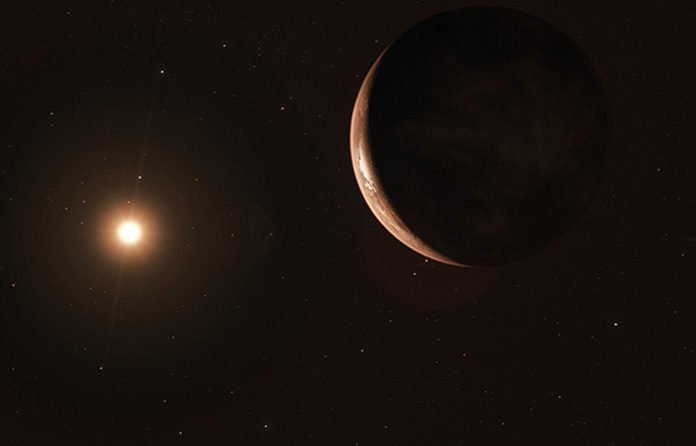Astronomers have found a planet in a circle around one of the nearest stars to the Sun, Barnard’s star.
This Barnard’s star is a ‘super-Earth’ with a mass of at least 3.2 times that of the Earth, and it orbits around its host star once every 233 days.
The study conducted by the Queen Mary University of London and from the Institut d’Estudis Espacials de Catalunya and the Institute of Space Sciences/CSIC in Spain shows the planet lies at a distant region from the star is known as the ‘snow line’. This is well beyond the habitable zone in which liquid water, and possibly life, could exist.
When scientists quantified the surface temperature of the planet, they found that the planet’s temperature is around -170 degrees Celsius. It means it is likely to be a frozen world that is uninviting to Earth-like life. But if the planet has a substantial atmosphere, the temperature could be higher and conditions potentially more hospitable.
Dr. Guillem Anglada Escudé, from Queen Mary’s School of Physics and Astronomy, said: “Barnard’s star is an infamous object among astronomers and exoplanet scientists, as it was one of the first stars where planets were initially claimed but later proven to be incorrect. Hopefully, we got it right this time.”
At nearly six light-years away, Barnard’s star is the next closest star to the Sun after the Alpha Centauri triple system. After that, Barnard’s star b is the second closest known exoplanet to our Sun.
Scientists used the radial velocity method during the observations that led to the discovery of Barnard’s star b. As the star moves towards the Earth, its spectrum appears slightly shifted towards the blue, and, as it moves away, it is shifted towards the red.
This is the first time scientists used this technique to detect a planet this small so far away from its host star.
However, scientists reanalyzed archived data over a 20-year time frame and included new perceptions with the most recent age of instruments, specifically the CARMENES spectrometer in Spain, the ESO/HARPS instrument in Chile, and the HARPS-N instrument in the Canary Islands.
Dr. Ignasi Ribas, from Institut d’Estudis Espacials de Catalunya and the Institute of Space Sciences in Spain, said: “After a very careful analysis, we are over 99 percent confident that the planet is there since this is the model that best fits our observations. However, we must remain cautious and collect more data to nail the case in the future.”
Further observations to increase the confidence of this result are already underway at various observatories, and the system is an excellent candidate for observation by the next generation of instruments specifically designed to image exoplanets directly, such as NASA’s planned Wide-Field Infrared Survey Telescope (WFIRST).
The study includes contributions from Professor Richard Nelson and research student John Strachan, both members of Queen Mary’s School of Physics and Astronomy.
This research published in the journal Nature and was supported in part by the UK Science and Technology Facilities Council and a Queen Mary University of London Principal’s Postgraduate Studentship.
